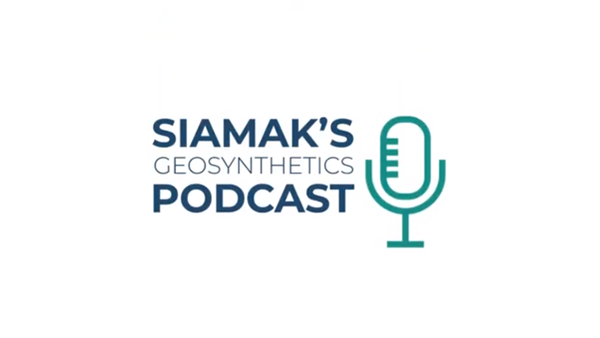Australia-based engineer Siamak Paulson (ADE Consulting Group Pty Ltd) has published the latest episode of his eponymously named podcast series: Siamak’s Geosynthetics Podcast. This time out, he checks in with Warren Hornsey (TRI Australasia). Hornsey shares his experience in geosynthetics, highlights the value of independent testing and how it has improved Australian engineering, and emphasizes the importance of including geosynthetics in college civil engineering programs as well as continuously learning in the field.
WARREN HORNSEY ON INDEPENDENT TESTING
Hornsey has been involved in geosynthetics since 1997, beginning first in South Africa before relocating to Australia.
“When [TRI] first started testing [in Australia] in 2013,” Hornsey says, “we had regular failures of materials for a number of reason. … The failure rate of geosynthetics has certainly declined.”
PODCAST: Composite Materials Are Changing Conversations in Geosynthetics
Greater awareness in the design and specification community of geosynthetics and of how to interpret the data derived from strong testing programs have been essential here. Testing has played a central role in improving communication between project stakeholders and the distributors and manufacturers filling orders.
Testing has helped the project side properly communicate material needs to suppliers and improved overall project success.
“As an engineer,” Hornsey says, “if you’re not checking what is going into the ground, that what’s going into the lining system is actually what you designed and falls within your factors of safety, you could end up with a failure that risks your reputation or your company’s reputation. Whether it is your fault or not is irrelevant once the lawyers get involved.”
Also, Hornsey highlights the importance of independent testing. Manufacturing, engineering, installation—everything involved in what we do—is a human activity and humans can make mistakes. People make honest mistakes or take short cuts. They feel pressures. They aren’t perfect. Independent testing and verification services add a check in the system that supports the goals of everyone involved.

GEOSYNTHETICS EDUCATION
Though geosynthetics have been used in the field for close to 50 years, education about them continues to lag in university engineering programs. This is a well know challenge, and in some ways not surprising. Geosynthetics were the only major class of construction materials invented in the 20th century. Colleges have had crowded engineering curricula that have needed to adjust to the many advances in concepts and materials that have long been taught. The incorporation of geosynthetics can seem daunting to curricula developers.
The International Geosynthetics Society (IGS) operates an Educate the Educators program to show college engineering professors how geosynthetics can be added to programs without the need for totally new program designs. Geosynthetics, being a piece of so many applications and working in tandem with so many other materials, can slot into education just as easily and successfully as they have in project designs in the field.
“The most important thing for engineers is education,” Hornsey says, “and understanding how to use these products properly. … They’re not all the same. They behave differently, and knowing how to apply them is critically important to the success of the job.”
Much of this education happens currently on the job: internal programs, conferences, webinars, and so forth.
No matter how you acquire your geosynthetics knowledge, “you’ll never learn it all,” Hornsey says.
True.
KEY QUOTE
“At the end of the day,” Hornsey says, “if we’re preventing the contamination of groundwater and so on, I don’t think you can put a price on that.”
Additional episodes of Siamak’s Geosynthetics Podcast are available on YouTube. Previous installments have included interviews with Mike Dobie, Brendan Swifte, Boyd Ramsey, and Kent von Maubeuge.











